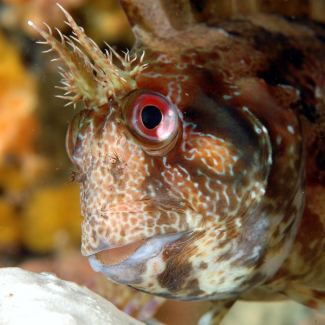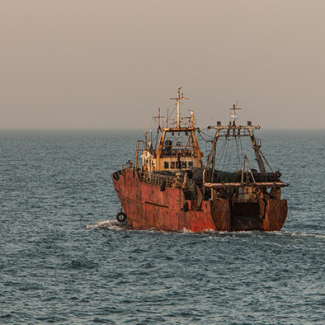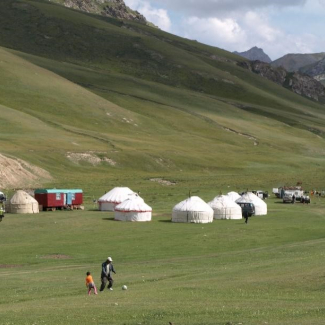
Record breaking observations at a depth of 172 metres shed light on how hard coral survives without light
In shallow water, less than 30 metres, the survival of hard corals depends on photosynthetic unicellular algae (zooxanthellae) living in their tissues. But how does the coral adapt at depth when the light disappears? French researchers from the CNRS, EPHE-PSL1 and their international collaborators, associated with Under the Pole (Expedition III), have studied for the first time the distribution of these so-called mesophotic corals in the French Polynesian archipelago, from the surface to 120 metres deep (with a record descent of 172 metres). As the amount of light decreases, the coral associates with other filamentous algae, in addition to zooxanthellae, which become inserted into its skeleton. These algae, the only ones found at this depth, could therefore play an important role in the coral's adaptation to life at depth as they can capture shorter light wavelengths. This work provides new knowledge on deep-sea coral ecosystems, which are the focus of growing interest due to their potential role as a refuge from the more directly threatened surface reefs. This research was supported by the ANR and the results are published in The ISME Journal.

© Gaël LAGARRIGUE/UNDER THE POLE


© Franck GAZZOLA/UNDER THE POLE/Zeppelin Network
- 1Working at the Centre de recherches insulaires et observatoire de l'environnement (CNRS/EPHE-PSL/UPVD) and the Laboratoire d'écogéochimie des environnements benthiques (OOB, CNRS/Sorbonne Université)
Symbiotic associations of the deepest recorded photosynthetic scleractinian coral (172 m depth). Héloïse Rouzé, Pierre E. Galand, Mónica Medina, Pim Bongaerts, Michel Pichon, Gonzalo Pérez-Rosales, Gergely Torda, Aurelie Moya, Under The Pole Consortium, Jean-Baptiste Raina & Laetitia Hédouin. The ISME Journal (2021)
DOI : https://doi.org/10.1038/s41396-020-00857-y


